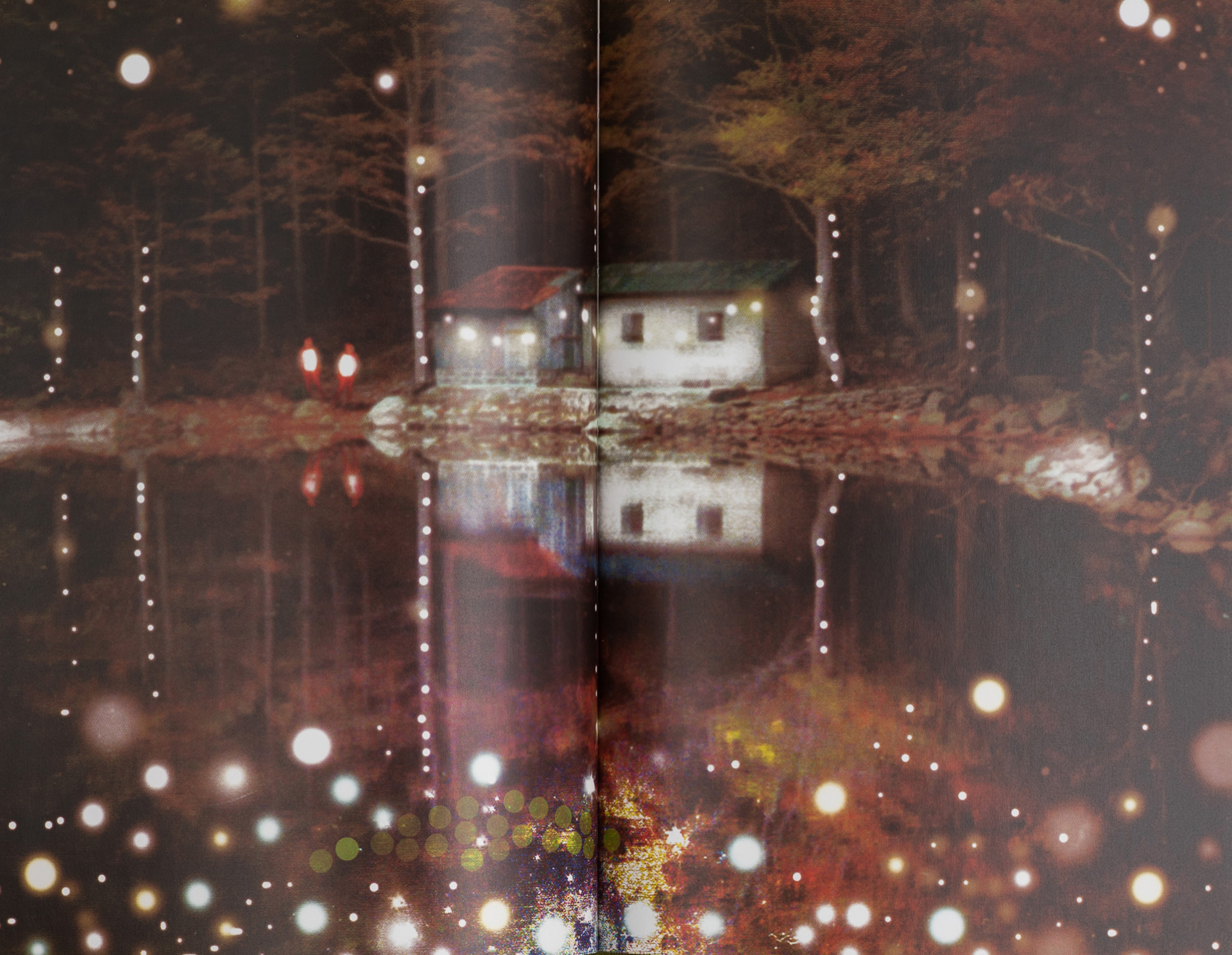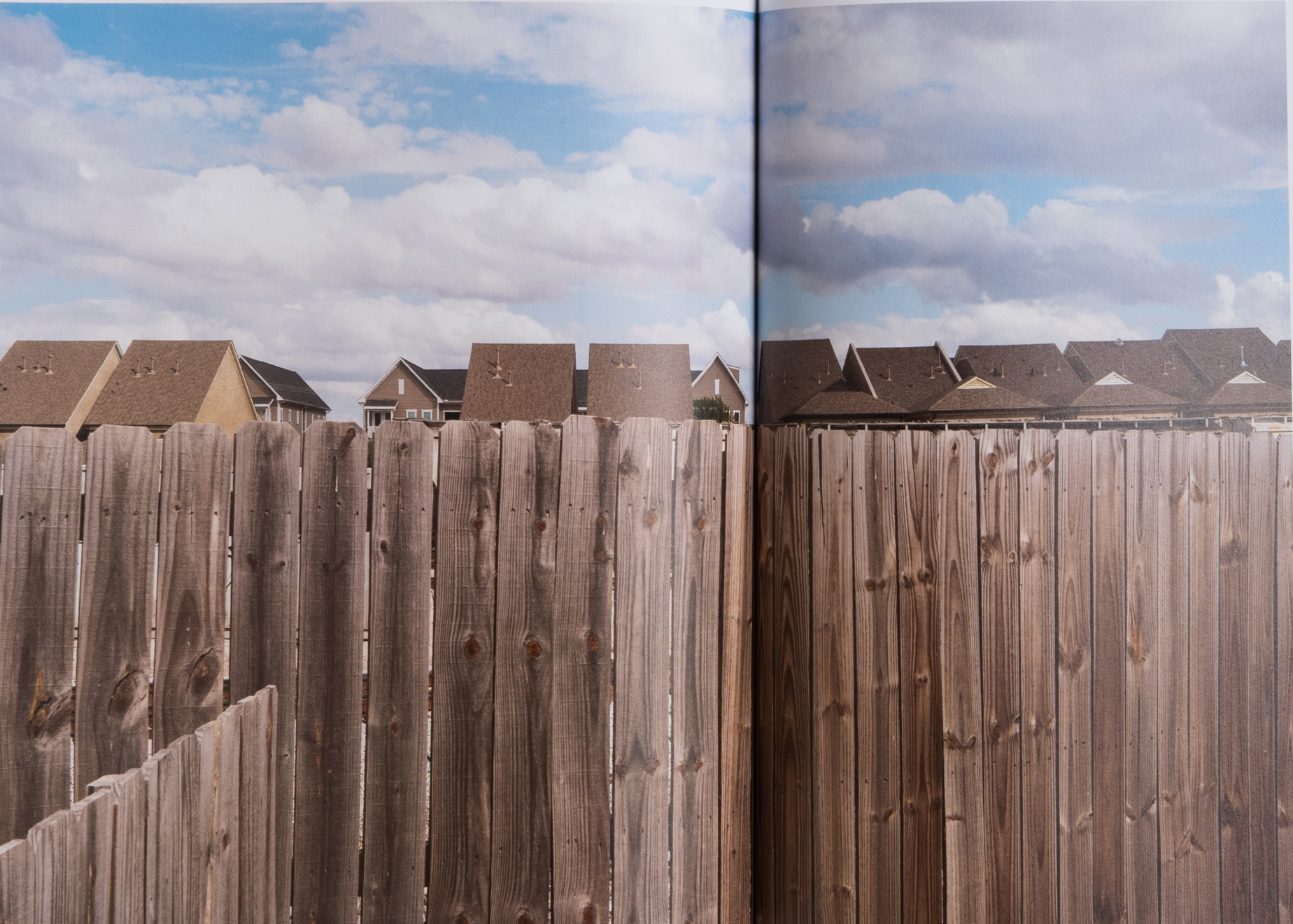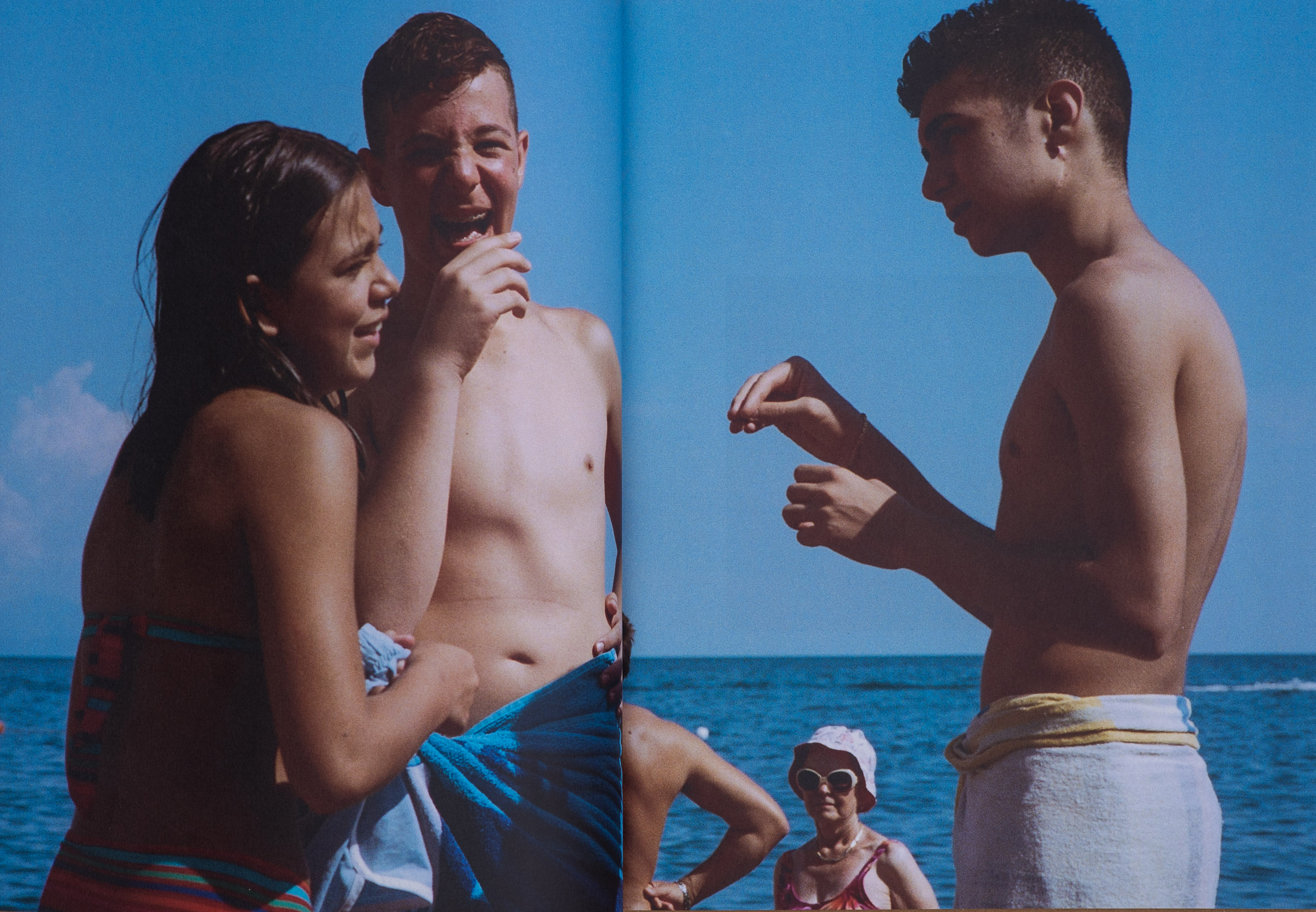Your last photography book was photographed on Allenby Street in Tel Aviv over the course of many years. Can you pinpoint the moment when you realized that your project of photographing the street would turn into a book?
I think about a book from the moment I realize that my photography is turning into a kind of investigation. I had been photographing Allenby Street long before I knew, “I was going to photograph” there. In 2012, before I bought a smartphone, I was given a tablet that I used to take a photo of a storefront on the south side of Allenby, while I was on my way home. I saw the results and loved it. That photo went into the book and it made me realize that I had a visual and cultural interest in that street’s storefronts, and I went back with a small camera that’s comfortable to wander around with. About two years later, I moved to a studio at the intersection of Pinsker, Ben-Yehuda, and Allenby, and the photographing intensified even more. By then it was already clear to me that it was leading towards a book, because the idea of composing an album is inherent to my work processes. The book came out in 2018, and only in hindsight did I realize that it was published exactly on the street’s centennial. It was serendipity.
The book is based on photographs of wandering in the genre of street photography, but your strategy is the opposite. You actually turn your back to the street, the scene of the action, and look through the camera at the window displays lining the sidewalks. What photographic challenges did you encounter?
Yes, my gaze was flipped. I was more interested in what was happening inside the windows than with the pedestrians and the urban environment. I contended with reflections and glare from the glass, and with the busy street, which you can barely step out into most days. That’s why at the beginning of the photographic journey, I mostly photographed parts of still lives, and used zoom in and zoom out. This made the objects and windows sort of collages in their own right. At that time, thanks in part to teaching, I became more interested in classical painting, and specifically in still-life from the 17th-century Golden Age, and later in still-life photography. At a later stage, I felt that some of the footage I was making was reminiscent of Zoe Leonard’s Analogue. I had to clarify for myself that I’m not dealing with commercialization or brand signage, or with globalization, but with the structure of the street, the store owners’ creativity, and the historical strata that report on what there was, and not just on what there is. Of course, the French photographer Eugène Atget was present in my thoughts, just as he was in my previous book, Common Area (Xargol Publishing, 2010).
You also took pictures on Saturdays when most stores are closed because of the Sabbath and there’s less street traffic, right?
Yes, I discovered that completely different things happen on that day. The structure of the stores became more noticeable, because I could stand farther back on the street without worrying about getting run over. On page 139 there’s a photo in which I captured the movement of the light across the plastic yellow curtain covering the goods in the display case. This curtain is lowered only on Saturdays to shield the shoes from the sun. Also on Saturdays, you can see the writing and drawings on the closed metal shutters that cover some of the display cases on the street. You can discover the layers, signs, and maps on the walls of the buildings, like for example on the facade of the Front Brothers’ store (page 35). On Saturdays, I could avoid run-ins with the storeowners, who weren’t always pleasant when they saw me standing in front of their display windows armed with a camera. Once someone came out of their store and threatened me with a broom because she was afraid I was stealing samples of her dresses. And there were other extreme cases.
You called the book General Allenby’s Showcase. How did you arrive at the title?
My partner suggested General Allenby’s Showcase during a brainstorming session and I liked it immediately. There weren’t any other contenders. The General is a historical figure, and the word showcase is just as dated. It’s both the showcase itself and a metaphor for how the street presents itself; a glimpse of the social, material, and architectural situation.
Allenby Street was named after General Edmund Allenby. Before that, it was called “Sea Street,” even though it only reaches the shore at the bend at the end of the road. Tel Aviv was initially built as a city on the water, and it slowly moved inland and turned its back to the sea. You can see the street’s various periods all along it, and it keeps changing all the time. It’s a street that combines the residential, recreational, and commercial. Today, its western part is more touristy, and not a few remnants of its dark past remain (dubious clubs and the like). Its southern part, also due to migration, has become a predominantly residential area. The middle part—Magen David Square and the Carmel Market—is a commercial center. As new urban complexes developed in the city, Allenby faded. There’s an urban renewal plan to transform the street into a pedestrian mall with bike paths, and the light rail will pass through it.
The photographs of the showcases depict multiculturalism, congestion, and personal taste. But in some of the showcases you photographed, I also see you and the “chic” you brought with you from Paris.
It’s not another identity, it’s an integral part of me. My image bank from Paris is always in the back of my mind. In hindsight, I recognize in the Allenby photographs certain images related to my memory and biography. This happens when the display cases contain culturally charged objects that I recognize from my past.
The book is bilingual; it has two covers and can be opened from both sides.
I chose two different images for the cover, one for the English side and one for the Hebrew side. Almost every book cover has a “weak” side and a “strong” side. From my perspective, the book is edited for the foreign reader, because it’s more natural to me. What I mean is that I edited it from left to right because that’s how I think, in my mother tongue, which is French. So, for me the horse is the book’s official introductory page, but you can also open the book from the other side. It’s important to me that there be two possible readings, two entry points.
How did you decide on the book’s size?
I thought of an intimate size but also one that would allow for looking at the small details inside the photographed display cases. It was important to me that the book fit on a bookshelf like any reference book and not stick out. Most photography books are more rectangular and I made a slightly different choice—the book is square. It was clear to me from the start that it would not be a big and splashy coffee table book.
You use photographs of entrances between buildings to mark interludes between the photographs of the showcases. In real life, the entrances that you photograph lead to courtyards and private spaces. In some of these photographs, there are signs with words such as “open” or “closed.” In the book, photographs of these entrances indicate the end or beginning of a chapter. It’s an interesting decision to let images replace titles.
Yes, the photographs of the passageways replace the chapter headings. When I was working on the editing, I found myself with multiple photographs and interspersed them into hidden chapters, with an internal visual and conceptual logic. They aren’t related to the linear movement of wandering the street. Each chapter has a double page spread that’s like a key guiding the editing.
During the editing, I would often tell myself a dark fairy tale in which a photograph of a tiger statue will lead to a girl, or a photograph of coins will lead to a photograph of a sex shop. Maybe it’s not a fairy tale because the street also has its dark sides. Sometimes what connects the photographs is a historical subject, or a bit of trivia that I know about the place. For example, the photo of the former Brown brothers’ store (page 71), they were furriers, in a shop window next to a restaurant, there’s a photograph of them illuminated in blue neon.
You spoke about intuitive and covert editing. The book doesn’t have chapter titles or photo captions. Do you have private code names for each of the book’s chapters?
Yes, I’ll gladly tell you: The Kitsch and the Fake, The Yellow, The Dark and The Dangerous. These are code names that guide the movement between the conceptual-thematic narrative and the formal story that visually constructs the mythologies of the street. From what I heard, people understood the unique atmosphere of each chapter. The great danger of editing is spoon-feeding. A book should be structured enough so that its interpretation does not run counter to its intentions, and on the other hand, it should give viewers freedom and credit their ability to bring their world into the photographs. This is one of the reasons the images are supposedly anonymous and don’t have captions. I find that leafing through a book this way is more fluid. A visual sequence is created without the need for endless verbal information, especially when there’s text in a significant portion of the photographs themselves. Ilanit Konofani quotes them at the end of the text she wrote for the book.
The book is accompanied by three articles. What perspective of the street does each one deal with?
The curator Ilanit Konofani wrote about “Allenby’s Cabinets of Curiosities,” with a specific photograph guiding her thoughts. Gilad Meltzer wrote the essay “The General’s Decline,” which views the book as a “memento mori” of the street, connecting the photographs to childhood memories of the street and the history of art. And the architect and urban planner Nissim Davidov wrote “Reflections on Allenby Street,” which presents historical, urban, and social aspects of the street.
You've edited photography books published by Xargol Publishing. Among them Vardi Kahana’s book Israeli Portrait (2006), and Tamir Lahav-Radlmesser’s book Second Person Plural (2009). Did your editing experience and knowledge lend themselves to your editing of you own book or did you consult someone?
The editing of every book is done in dialogue with the author. Sometimes the dialogue is fluid and fruitful, sometimes there are squeaks. It’s very difficult to edit yourself because of over-involvement. On the other hand, I see editing as part of the creative process. It’s important to show the materials and hear other opinions, in order to open up the internal discourse at different stages of the editing. I showed the edits to colleagues and listened, withdrew into myself and made decisions. Editing is comparable to music. I tell my students that one has to choose a rhythm, to decide whether they want it to be staccato or legato, forte or pianissimo. A book has an internal rhythm and one should also use blank pages to aerate, connect images and find covert and overt meanings. In editing, you should go against your own idea. Sometimes it works.
Is General Allenby’s Showcase a photography book or an artist’s book?
A photography book is a book that has photographs. It can be a travel book, a book about animals, a book about fashion, or an endless number of other examples. It can also be a monograph or a retrospective. I’m a photographer. I do not define myself as an artist. To me, Showcase is a “photographer’s-book” on the scale of an artist’s-book. This is one topic I worked on; it’s more or less complete, and expresses a finished creative process. It’s a space in itself.
Does a book also lead you to thoughts about an exhibition? I’d be interested in seeing some of the photographs in an exhibition space.
While I was working on it, I was less interested in presenting these works in an exhibition space. The printed photographs look spectacular, but for me, the book as an object sums up the broader study. Presenting photographs in a book is a much more profound process than presenting them in an exhibition. The book makes it possible to present a wide array of topics that an exhibition space cannot contain. I exhibited some works from the book at the Lobby Gallery in Tel Aviv, at the book’s launch at the Indie Gallery in Tel Aviv and at the Musrara School’s Social Gallery. Of course, I’m always happy to present the works in one context or another.
I see a deep connection between Showcase and your previous books. I recognize the study of local photography, and of course the direct photography approach. The first book you published, together with Drora Domini (Everywhere, Landscape and Memory in Israel, Xargol Publishing, 2002), dealt with monuments and memorials in Israel. And the second book (Common Areas, Xargol Publishing, 2010) focuses on the entrances to apartment buildings in Tel Aviv. In all of the books, you stand with the camera in front of the subject, but also keep your distance.
The three books deal with issues of social and historical value. In all of them, I find beauty worthy of being photographed. All three seem to show only the facades, but they concern charged sites. I’m interested in the tension between private and public space and that is the reason for the distancing. In the three books, I bring the gaze of someone who was not born or raised here. For example, in the project about entrances to houses, I identified European elements implanted in the Middle East. The light under the porticoes and in the stairwells brings a softness that disappears in the sunny streets. There was something mystical about it that reminded me of the light inside churches and cathedrals.
When Drora Domini and I set out on the monuments project, we were definitely in a militant mood. We said to ourselves, “Until now, only men have photographed them, and most of the monument makers are men too. Now it’s our turn.” The more we looked and photographed, a dialogue developed among us, the monuments, and the landscape. We saw them as ugly, beautiful, human, melancholy, and funny. There’s a sense of humor in the book and also in General Allenby’s Showcase. Perhaps not frenzied laughter, but it elicits a smile.
Is publishing a book a defining moment in your photographic career or do you see it as a routine part of your practice?
The books I’ve published are mature bodies of work that materialized in a book. There is no strategic decision of self-promotion. I am a firm believer in emotional and personal documentary photography. Sometimes documentation takes you to surprising and even abstract places.
What book should we add next to our library?
Half a Mega of Memories by Noa Ben-Nun Melamed, published by Hakibbutz Hameuchad, 2008.
Where can readers buy your book?
In bookstores and on the publisher’s website.
France Lebée-Nadav, born in Paris in 1965, lives and works in Tel Aviv-Jaffa. Lebée-Nadav is a graduate of the Department of Photography at Hadassah College, Jerusalem. A photographer and teacher of photography, her works engage the photographic traditions of still life and urban landscape as she documents the seams that separate interior and exterior, private and public, living and still-life.



"The idea of composing an album is inherent to my work processes. The book came out in 2018, and only in hindsight did I realize that it was published exactly on the street’s centennial. It was serendipity."




"The photographs of the passageways replace the chapter headings. When I was working on the editing, I found myself with multiple photographs and interspersed them into hidden chapters, with an internal visual and conceptual logic. They aren’t related to the linear movement of wandering the street. Each chapter has a double page spread that’s like a key guiding the editing."









